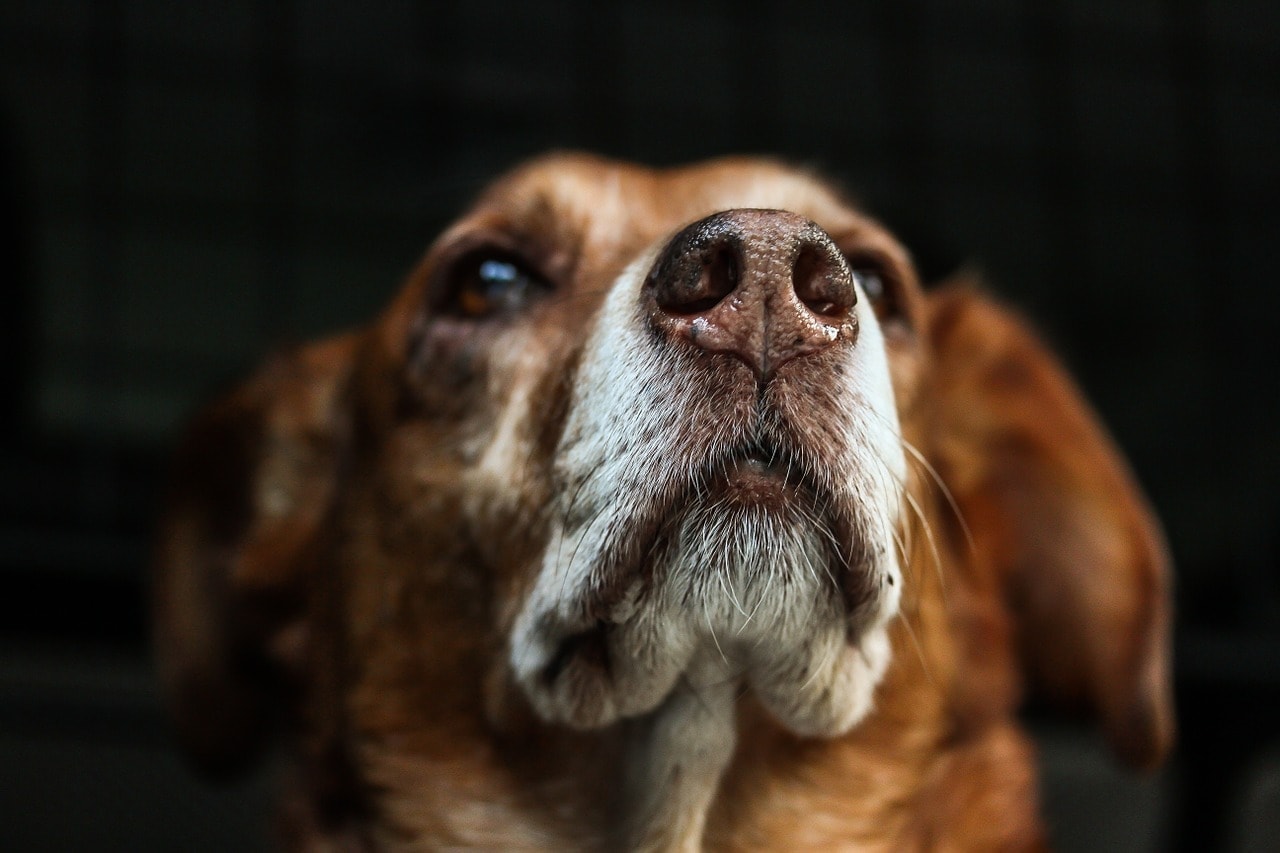What Your Dog’s Nose Can Tell You


Your dog’s nose is amazing. His nose has about 300 million smell receptors compared to your 5 million. He also smells “in stereo.” To breathe and smell, his nostrils have two portions. When you inhale, you only sense scents in a tiny area of your nasal cavity roof. Almost all scents you inhale just pass through your nose with the air.
Your dog’s nose works differently. When he inhales, only about 12% of the air travels into a “odor pocket” at the back of his nose, while the rest goes into his pharynx and lungs. The air in the pocket passes through turbinates, a maze of bony structures that divide scents into their constituent components. The turbinates contain olfactory receptors. After reaching these receptors, odor molecules are recognized by form and sent to your dog’s brain for examination. To top it off, the region of your dog’s brain that analyzes scents is 40 times larger than the human equivalent.
Consider that you can smell a teaspoon of sugar in your coffee. Your dog can detect a teaspoon of sugar in 2 million gallons of water! Or you can smell a cake. He can smell every component!
Aspects of Tracking
Scent, not eyesight, is how your dog “sees” the world. His world is full with odors that humans cannot detect. That’s why dogs can sniff out concealed explosives, narcotics, even bodies buried under snow, water, or debris. That’s why they’re great at searching for lost kids, hikers, and criminals escaping.
Humans lack a second olfactory ability. Humans lack an unique organ at the base of their nasal passages. The vomeronasal organ (Jacobson’s organ) It detects pheromone molecules. Pheromones are substances associated to sex, fear, or both. Your dog’s Jacobson organ is a dedicated server. It only allows pheromone molecules to combine with other odor molecules. The Jacobson’s organ’s nerves carry the pheromone molecules to his brain. When they arrive in his brain for analysis, they have their own compartment. It’s a complex system.
These dogs are the champs of smell. They can tell one person’s footprint from dozens or hundreds of others who have walked there. They can smell fingerprints left on a wall or other object weeks ago.
Fear Smell in Dogs?
The belief that dogs can detect human fear has been around for decades, if not millennia. Is it true? Yes, provided you define “fear” loosely. Fear is an emotion that dogs cannot detect. They can and do smell the chemicals people generate when terrified. Have you ever observed that perspiration from hard exertion smells different from sweat from worried, anxious, or fearful people? Dogs can instantly detect the difference and determine the source of the odor (s).
Also, while dogs rely on their sense of smell to see the “big picture” environment, they focus on visual details better than humans. They can detect subtle changes in human face emotions and body language, as well as subtle bodily movements.
Pheromones and stress-related substances like adrenaline can be smelled by dogs, and dogs can see and feel human stiffening and clenched-teeth motions almost reflexively. While they can’t smell fear, they can sense it.
So, does a dog that detects your anxiety attack you more likely? No, according to research. What counts is if the dog is scared of you or feels you are invading his space. Most dog-phobic people gaze squarely at each dog they encounter, dreading the worst. That’s the absolute worst. Dogs and other pack animals confront each other with direct eye contact.
Stop moving forward, gently twist your body slightly to the left or right, and stay motionless, eyeing him out of the corner of your eye without turning your head toward him, according to experts. Keep cool and relaxed to avoid giving off fear-inducing hormones or pheromones. Don’t clench your teeth or fists. Never run away; it makes you appear like prey and invites him to pursue. Never shout at him, expecting to intimidate him into submission.
If you have the foresight, note how he holds his tail. If it’s between his legs, he’s scared. If it’s clear, it’s OK. If it’s up, he’s telling you not to get too near. If you don’t, you’re telling him you won’t enter his zone and don’t expect him to either.




















